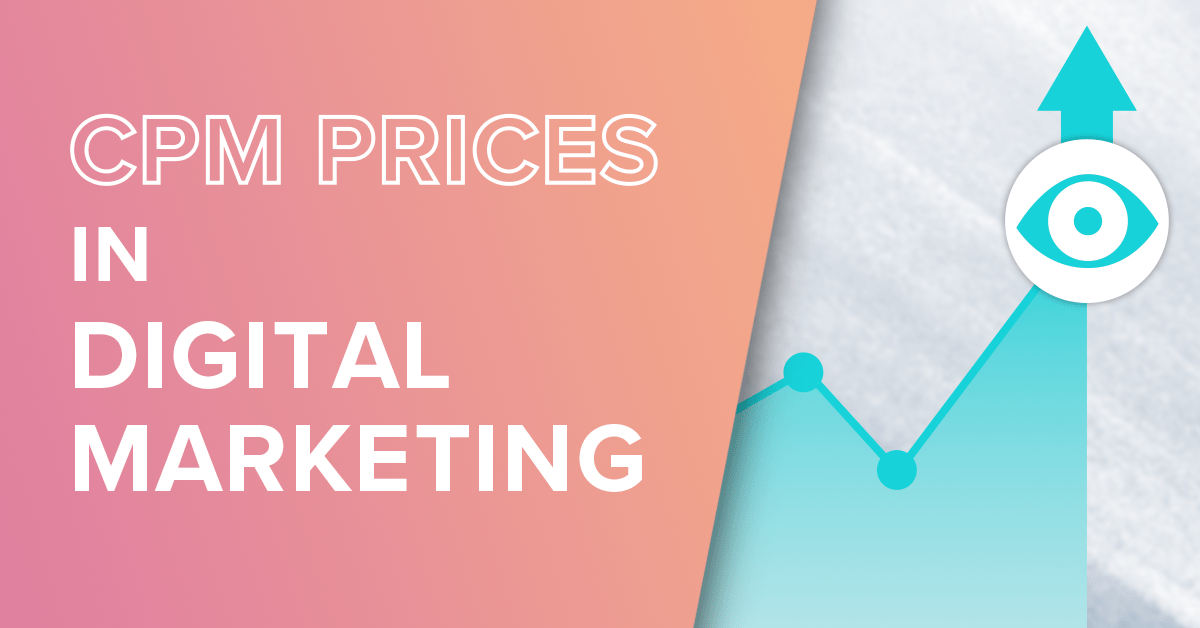What is Native Advertising? The Ultimate Marketers Guide For 2024
September 7, 2021
Chances are good that you’ve seen a native ad before – but you may not have realized it.
For the past few years, native advertising has rapidly increased in popularity.
In this article, we’ll take a deep dive into what native advertising is, how it works and what the benefit is for marketers.

Content
The definition of Native Advertising
Native advertising is a paid advertising channel where the ad content matches the form, appearance, and function of the media on which it appears. Simply put, it’s ads that “fit in” to a website, app or publication.
Native ads are often divided into three categories:
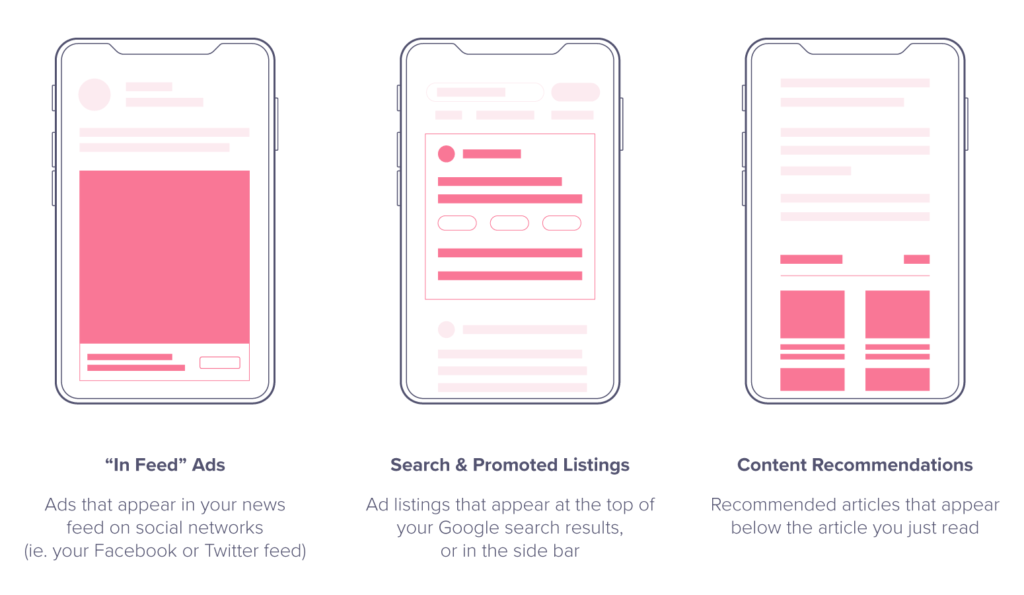
Native Advertising – A brief history
Native advertising in digital media has been around for about a decade. But the principle of native advertising – that is, ads that fit seamlessly in the media they’re published – has been around much longer than that.
For the past few years, native advertising has quickly increased in popularity.
In this article we’ll take a deep dive into what native advertising is, how it works and what the benefit is for marketers.
Native advertising has its roots in advertorial content (advertising + editorial) in magazines or newspapers. These traditional native ads have been used to tell brand stories in magazines since Cadillac launched an advertorial campaign in The Saturday Evening Post in 1910.
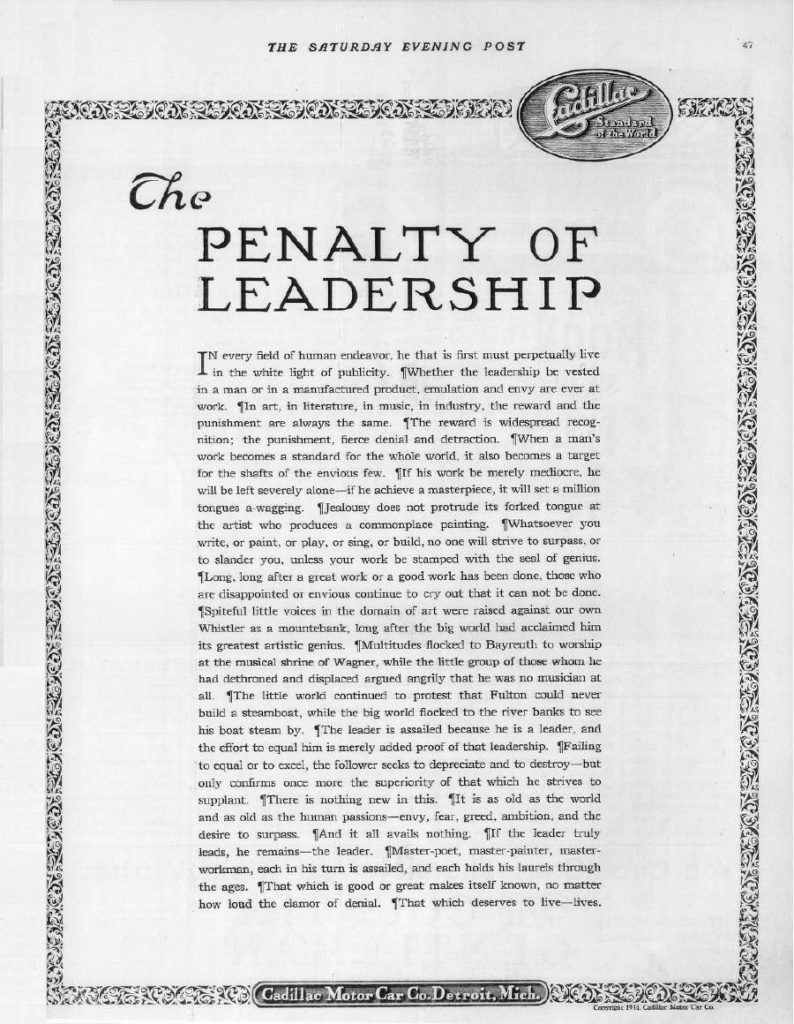
Native advertising was later brought into the digital space in 2011.
Initially, the native advertising method was mainly used in social media platforms such as Facebook. These ads matched the look and feel of users’ Facebook feed.
Buzzfeed launched native advertisements on its website in 2012, focusing on making the ads as relevant as possible to the page content.
Eventually, with the rise of programmatic advertising, Buzzfeed moved its native advertising inventory to programmatic ad exchanges in 2018.
Moving native advertising to programmatic buying methods is a fast-moving trend within the space.
In fact, in 2020, 88% of native advertising was bought programmatically. With more powerful AI-targeting and wider ad inventory, that trend is projected to continue.
What’s the difference between Native Ads and Display Ads?
Display ads (also known as banner ads) are visual ads in a graphic form in different formats and sizes. These ads are effective in brand building, promoting specific products, or retargeting website visitors.
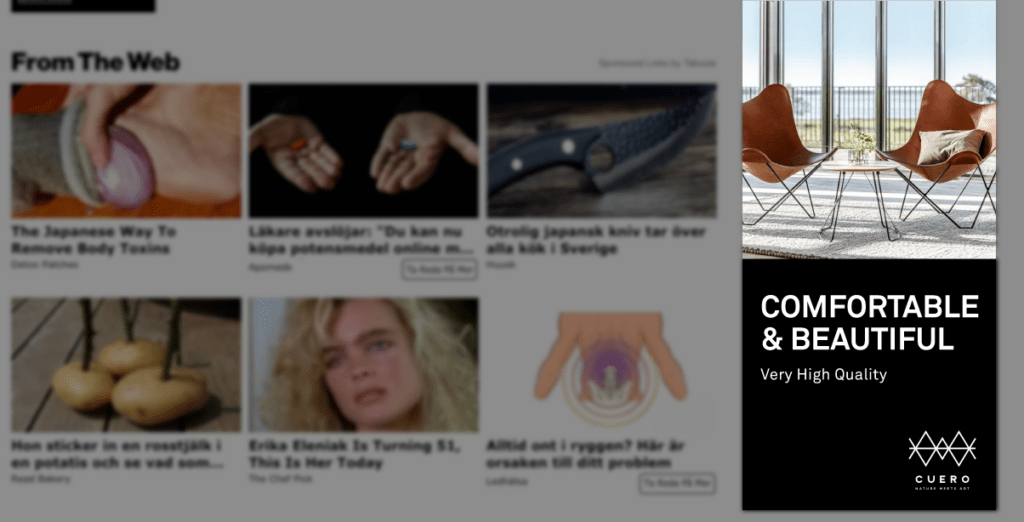
Display ads are a great way to showcase your brand and products according to brand guidelines and tonality.
They also reach people wherever they browse online due to the wide inventory on different websites.
This ad format has shown a clear effect on brand awareness and intent to purchase. Marketers use them as an important part of their online strategy.
The first display ads were banner ads, hyperlinked, image-based ads shaped like a strip, and usually located at the top of a web page. Later, as design became more complex and creative, display ads evolved to include videos, interactive elements, and pop-up functions.
Native ads, on the other hand, fit into the media in which the ad is shown. These ads have an editorial look and feel and are less obtrusive and hard-selling than other forms of digital ads.
Native ads are commonly used to go into more detail when promoting a product, cause, or brand.
This format has the potential to catch the interest of a target audience – giving a brand the opportunity to tell its story.
With average click-through rates of around 0.3%, native advertisements are an effective way to drive traffic to an article, website, blog, or app.
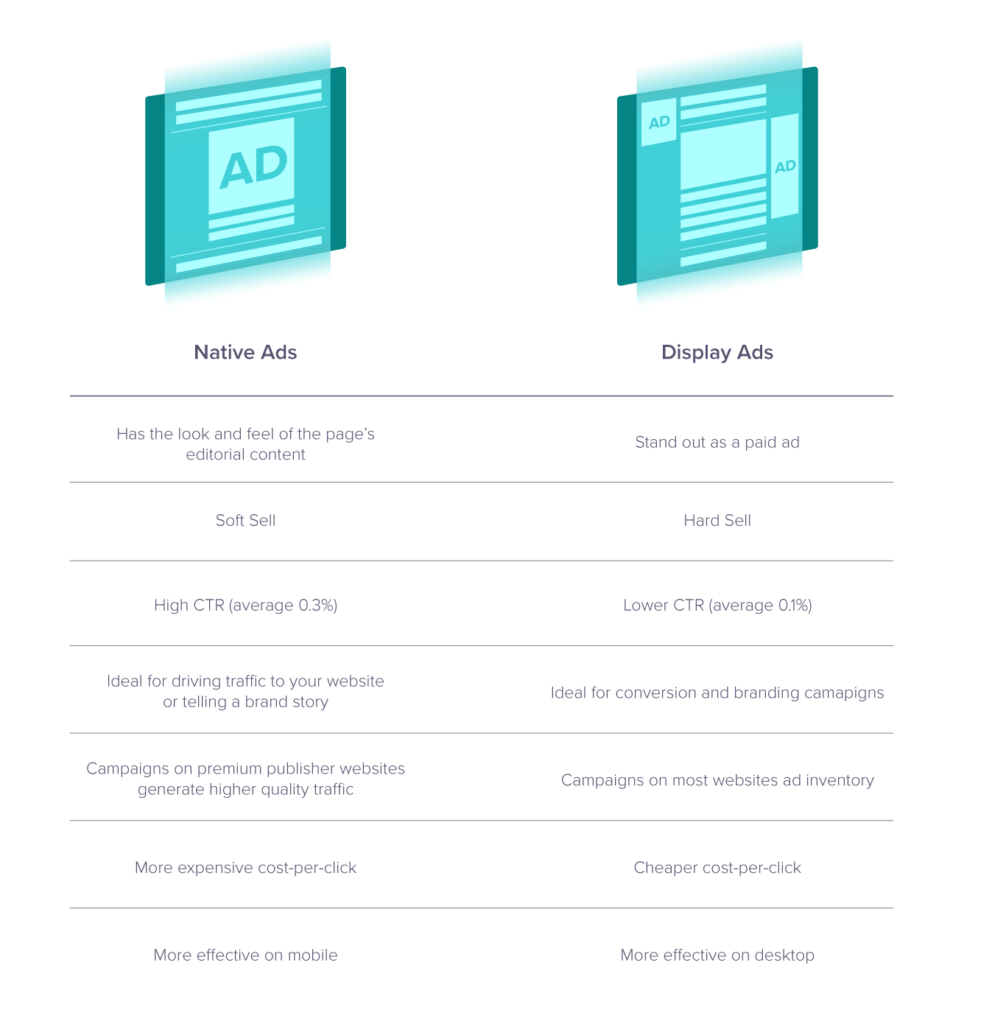
What do Native Ads look like?
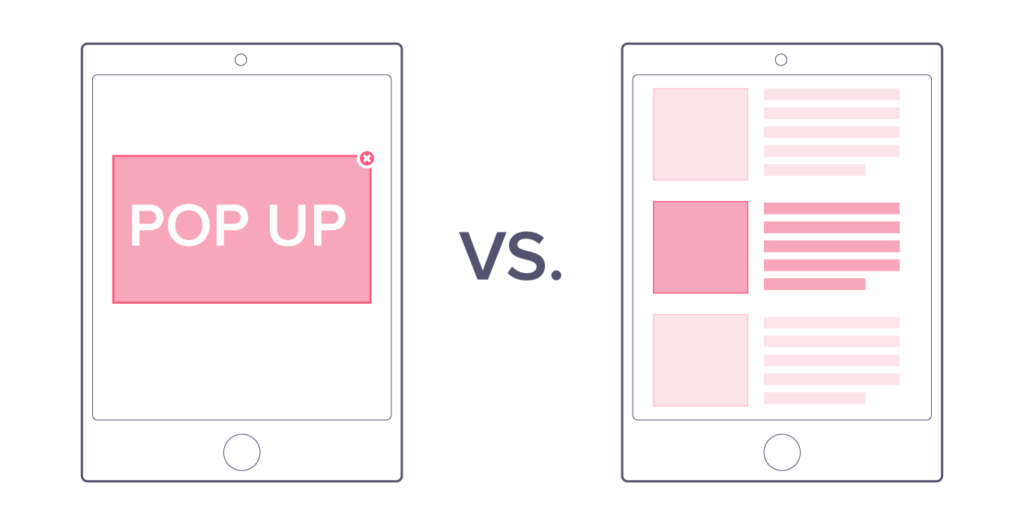
Native ads match the look and form of the media it’s shown on, such as a news feed. This type of online advertising usually looks as though it contributes valuable content to a publisher or website.
Since the ads seamlessly blend into the website’s content, they appear to be organic content (but they should always indicate that they are an ad). Native ads fall in the category of content marketing.
Different types of Native Advertising
Native campaigns are paid advertising methods within content marketing. The different formats are commonly categorized into three different groups;
In-feed ads
These ads are integrated into content pieces, social feeds, or platforms. They blend in with the publisher’s content and create a non-disruptive user experience.
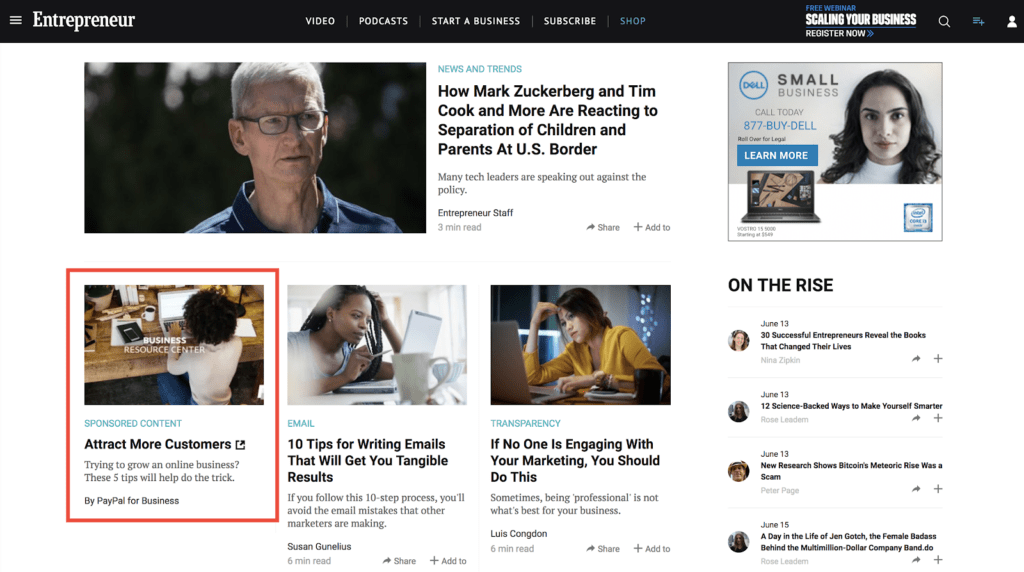
Content recommendation ads
Recommendation ads are displayed alongside editorial content or other ads in a recommended format. These ads are typically found at the end of an article and feature different suggested ads or content.
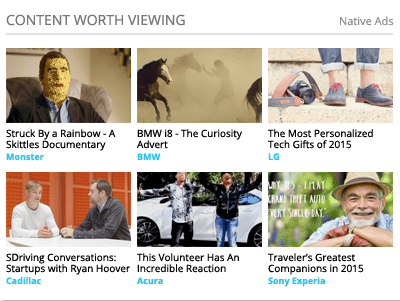
Search and promoted listing ads
Another type of native ad is a so-called “search ad”. Paid search ads are paid text ads shown on a search engine such as Google or Bing. These promoted listings are based on keywords that a user has searched for.
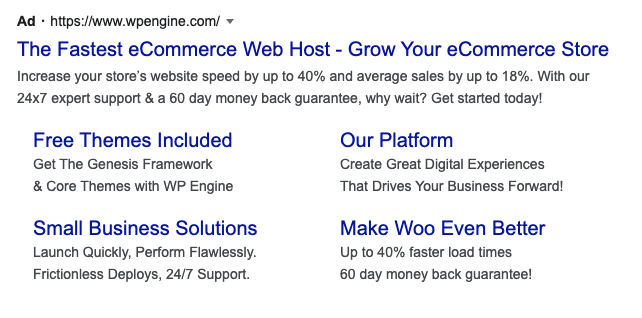
Who benefits from Native Ads?
Native advertising is a valuable marketing channel for both B2B and B2C brands.
Whether you’re looking to increase brand awareness or increase conversions, native advertising offers a great opportunity to connect your target audience in a format of the user’s choosing.
By using the native format, advertisers are able to avoid banner blindness.
Native advertising campaigns work exceptionally well for brands with plenty of content or brands that have a story to tell.
Programmatic native gives advertisers the opportunity to invest in the content they already have. With many brands using content for SEO purposes, native ads enable an additional way to communicate content.
Even though programmatic native advertising can be used as a conversion channel, many find it better to focus on engaging their target audience.
Native advertising examples – Marriott
One example of native advertising done right is the luxury hotel chain Marriott’s campaign, “Gone”.
This campaign was a partnership between Marriott and the publisher Medium.
The native ads were formed to catch the attention of online users with one goal in mind – to engage.
This native content barely looks like an ad, but rather articles written for travelers.
By prioritizing good content and driving engagement, Marriott was able to tell its full story and empower its brand.
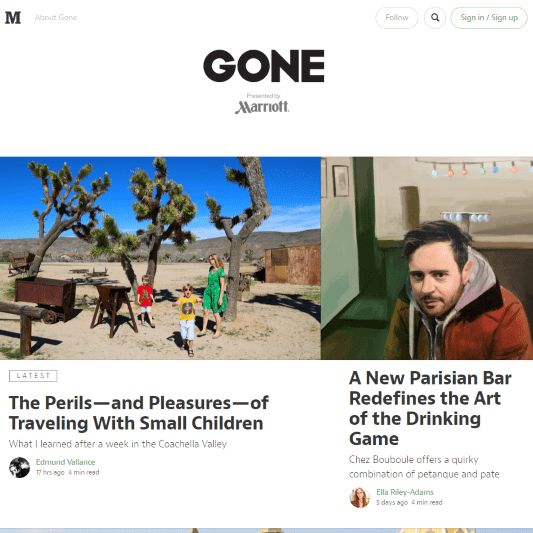
These ads appeal directly to Marriott’s target audience who are seeking new travel experiences.
Rather than creating ads to get consumers to book rooms, Marriott created stories to engage their audience.
Marriott created a library with content for their ads with everything from what to think about when traveling with kids to how to which restaurant to go to in Hong Kong.
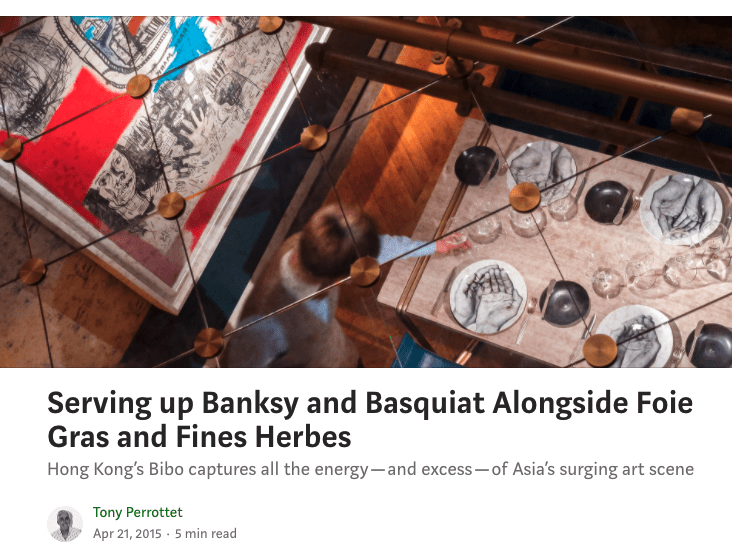
These types of native campaigns are what keep brands top-of-mind and set the industry leaders apart from the rest.
Why do advertisers choose Native Advertising?
Native advertising is a fairly new digital phenomenon but has quickly become common in the marketing mix of most digital marketers.
Native ads are highly engaging, and suited to mobile devices, with an average click-through rate of up to 0.38% for premium native ads viewed on a smartphone.
As we all know, content is still king – and that’s not going to change anytime soon.
Native advertising has the ability to, as an additive to other channels, give brands the chance to tell their story and build stronger relationships with their customers.
Planning and executing a digital advertising campaign can be overwhelming and time-consuming. Let the marketing experts at Match2One create a step-by-step plan tailored to your business.
Want to know if native advertising is for your company? Request a demo today to discuss your marketing goals today and we’ll get in touch shortly.
- Native advertising works. Native ads have 53% higher viewability than other forms of digital advertising. This increases purchase intent by 18% and the visual engagement with native ads is the same, and even slightly higher than the original editorial content. Study after study shows that native campaigns beat banner blindness – a clear indication that native ads are effective.
- Native advertising fights ad fatigue. Digital ads have been around for a while now. More internet users are bored with seeing ads and after a while, they simply stop paying attention. Since native ads blend with editorial content, they don’t tire out the audience. As long as the content is relevant and interesting, native advertising engages the audience.
- Increase in purchase behavior. Consumers know that native ads are a form of advertising, but they don’t care! In a recent study at Stanford University, researchers found that native advertising fools nobody. Consumers are well aware that what they are seeing is a form of advertising, but native ads still have a significant effect on purchase behavior.
How does Programmatic Native Advertising work?
Native advertising is one thing. Programmatic native advertising is using the full potential of native.
Targeted native ads through programmatic advertising in real-time and at scale enable brands to optimize their ROI and reach for native campaigns.
Native ads are built by adding elements such as headlines, thumbnail images, content URLs, and description text.
These native ads then are shown to a site visitor after a process known as Real-Time-Bidding (RTB).
So, what exactly is programmatic native advertising?
This is how it works:
As a visitor enters a website, a request is sent to an ad exchange with information on the website along with visitor data.
This information is then matched against available advertisers and a real-time auction takes place between the advertisers that match the criteria.
For instance, let’s say you visit a website that sells organic dog food, but you don’t make a purchase. Later you visit your favorite news site, and suddenly you see native ads about organic dog food everywhere!
These ads are placed in front of you with the help of Real-Time Bidding.
The company selling dog food has simply stated: “I want to show my ads on these websites – but only to visitors who previously visited my site and didn’t make a purchase.”
During the time it takes you to load the website an auction takes place between the organic dog food brand and everyone else who’s also interested in showing you ads.
The winning bidder gets to show its native ad to you on the publisher’s website. The elements added for the native ad instantly configures the native ad via templating design to fit the website.
With a programmatic platform, native advertising can achieve a far more targeted response for each user in real time, which translates to increased engagement and higher conversions.
How much does Native Advertising cost?
Native advertising is a cost-effective way to build your brand and get your message across.
Just like any advertising format, the pricing depends on where the ad is shown and to how many people.
Recommended budgets for mid-size companies often start at between $2,000 – $5,000 a month.
This gives a programmatic native campaign enough budget to find the best optimization patterns for a successful campaign.
If a campaign is only shown on a premium publisher such as The New York Times, CPM prices might be higher than a campaign showing ads on parenting forums.
Cost-per-mille (CPM) for native is generally a bit more pricey than that of display ads.
In a programmatic display campaign, average CPM prices often go between $0.50 – $4. A native campaign will often shoot far beyond this, reaching $10, or even over $20.
Native’s rise in popularity hasn’t been affected by this, though. The native advertising channel is often regarded as a cost-efficient part of the marketing mix due its potential to drive high engagement.
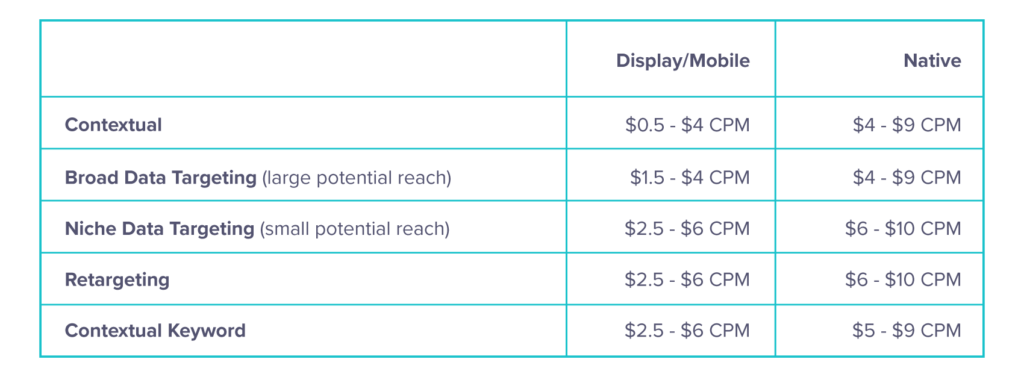
The future of Native Advertising
Native advertising’s popularity has risen every year since the first native ad, and still on its way to reach its peak.
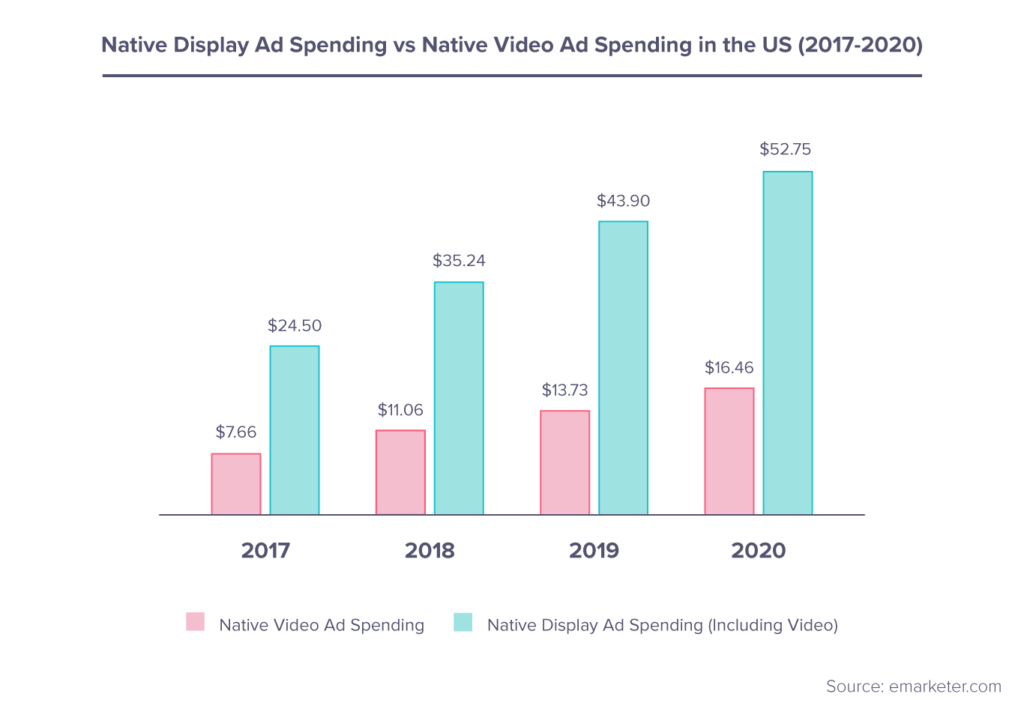
With more publications, such as CNN or Forbes, offering native ad placements, native is projected to become as mainstream as TV or OOH advertising.
Whether a brand is seeking to promote its service or increase its online presence, businesses will continue to find that going “native” will be a key to their advertising success.
In 2025, native ad spend is projected to increase by 372% from 2020 with a total value of $402 billion.
Top 4 trends to look out for
Things change with the increased spend of native advertising and more brands jumping on the “native train”.
To help you make native campaigns as efficient as possible – our team has put together the top 4 trends to look out for.
More programmatic
Buying native ad space traditionally, or directly from a publisher is a thing of the past. In 2020, more than 90% of native ads were bought through the programmatic buying model.
Programmatic ad buying enables more flexibility by managing the buying and selling of digital ads through software rather than human labor.
With programmatic native, the ads are not bought on a specific website. This gives advertisers higher reach to launch native campaigns more cost-efficiently whilst targeting only the right people.
The list of benefits by buying native ads programmatically is long, but it can be boiled down to:
- Higher transparency
- Effective targeting
- Higher cost-efficiency
- Real-time data
- Higher flexibility
Consumers expect valuable content
As a brand, you need to bring value to your target audience with your native campaign. This ad format is often well received by consumers and is a chance for brands to tell an engaging story.
A survey conducted by Time Inc found that almost 90% of consumers under the age of 35 prefer native ads over traditional advertising. 93% of the participants said that they prefer brands to put effort into their native ads and create something unique.
Over half of the participants in the same study wanted brands to tell a story rather than sell something.
This puts your landing pages in the spotlight. Make sure your native campaigns direct traffic to a landing page that meets the expectation your target audience have after seeing your native ads.
More mobile – less social
Native ads will be more programmatic and mobile – and less social. A report in eMarketer found that 88% of native ads are on mobile devices.
Native ads on social media, on the other hand, have decreased 3% from last year.
This trend shows that non-social native is where more of the native ad investment ends up.
More marketers are now looking to use the native format outside of the “walled gardens” of social media.
More storytelling on premium websites
Trends show that brands prioritise storytelling and putting their content in the right context for more effective native ads.
This includes advertising content on premium websites (such as BBC, The New York Times, or The Guardian) with a clear brand story to tell. Many brands already use content in other channels such as SEO. This content is often also used in native ads.
Native ads on premium websites have shown to be 3x more effective. Placing paid content on these established publishers gives higher credibility to a brand.
In the future, this will be the ultimate way for advertisers to tell their story in a secure environment that empowers their brand.
How Match2One Native can boost campaigns
Native is a powerful tool for marketers in building and strengthening their brand.
Match2One Native gives advertisers access to all native ad inventory, including all premium publishers.
Match2One’s native ad platform gives marketers dynamic ad functionality so that each ad perfectly fits the publisher’s website. This automatic feature increases the chance that your target audience looks at your native ad by 53%.
Planning and executing a digital advertising campaign can be overwhelming and time consuming. Let the marketing experts at Match2One create a step-by-step plan tailored to your business.
Want to know if native advertising is for your company? Request a demo today to discuss your marketing goals today and we’ll get in touch shortly.

